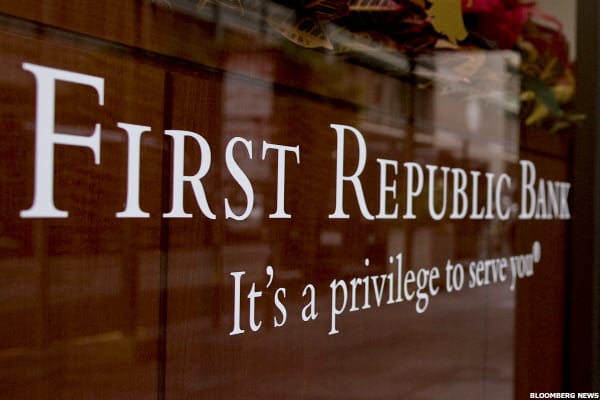
Moody's Investors Service going forward wants to avoid making the mistake it made with Silicon Valley Bank.
The credit-rating company downgraded the tech lender's rating only after regulators shut it down. They'd feared a liquidity crisis and were determined to avoid panic among investors and contagion through the financial system.
Don't Miss: SVB's Collapse Points to a Familiar Problem -- Risk
While fears surrounding U.S. regional banks have intensified in recent days, Moody's has just warned that it plans to downgrade the ratings of six of them. They are:
First Republic Bank (FRC)
Western Alliance Bancorp. (WAL)
Intrust Financial IFNC
UMB Financial (UMBF)
Zions Bancorp. (ZION)
Comerica (CMA)
Moody's says these banks have been reviewed for downgrade, due to the fact that they have too much in the way of insured deposits. That status makes them vulnerable to rapid and large withdrawals from depositors and to a run on the banks.
Moody's decision comes the day after a disastrous stock market session for regional banks. First Republic Bank, based in San Francisco, an hour north of Silicon Valley Bank, fell 60% on March 13.
Moody's' Issues With First Republic Bank
Moody's attributed its pessimism about First Republic Bank's high reliance on more confidence-sensitive uninsured deposit funding, its substantial unrealized losses in its available-for-sale and held-to-maturity securities portfolios, as well as a low level of capitalization relative to that of peers.
"The share of deposits which are above the Federal Deposit Insurance Corp.'s insurance threshold is material, making the bank's funding profile more sensitive to rapid and large withdrawals from depositors," the rating agency said.
In addition, "if it were to face higher-than-anticipated deposit outflows and liquidity backstops proved insufficient, the bank could need to sell assets, thus crystalizing unrealized losses on its [available-for-sale] or [held-to-maturity] securities."
First Republic Bank has assured in recent days that it has diversified sources of financing. The total available unused liquidity to fund operations is now more than $70 billion, the bank said on March 12.
"First Republic’s capital and liquidity positions are very strong, and its capital remains well above the regulatory threshold for well-capitalized banks," asserted Jim Herbert, founder and executive chairman, and Mike Roffler, president and chief executive, in a statement. "First Republic continues to fund loans, process transactions and fully serve the needs of clients by delivering exceptional service.”
The bank has expanded sharply over the past four years due to deregulation of midsized banks. First Republi recorded assets of $212.6 billion at Dec. 31, 2022, more than double the $99.2 billion of year-end 2018.
Regarding Zions, Moody's said it would likely downgrade the bank if its "deposit base has eroded markedly, triggering asset sales, loss crystallization and a higher reliance on market funding.
"Ratings could also be downgraded if Moody's considers that management actions taken or envisioned by the bank will not be sufficient to preserve its profitability and capitalization which may also result in a significant franchise erosion."
'Volatile Funding Conditions'
Generally speaking, the rating company noted that the environment has changed for regional banks, which are vulnerable to bank runs.
"The review for downgrade reflects the extremely volatile funding conditions for some US banks exposed to the risk of uninsured deposit outflows. The review will focus on the bank's variations in deposit amounts since the start of the year as well as the stickiness of its deposits going forward," Moody's said.
"The review will also consider the amount of securities sold, if any, to address deposit outflows, any management actions completed or planned to address the negative effect of potential securities losses on the bank's earnings and capital, and ALM governance and risk limits."
Moody's has been criticized recently for giving SVB an A rating until the evening of the bank's collapse, which was reminiscent of what happened during the subprime mortgage crisis in 2008.
The A rating means that the risk of Silicon Valley Bank not meeting its financial obligations or defaulting was considered low.
Credit-rating providers had given AAA ratings -- the highest rating -- too generously on securitized mortgage instruments. This contributed to the formation of the speculative bubble. Without this rating, the real risk would undoubtedly have been better understood.
Then, when the housing market deteriorated, the agencies failed to downgrade mortgages properly and in a timely manner. They reacted too late and with brutal downgrades, which aggravated the crisis.
In the end, 93% of securitizations of mortgage products marketed in 2006 with an AAA rating were reduced in quality to junk bonds.
Get exclusive access to portfolio managers and their proven investing strategies with Real Money Pro. Get started now.







